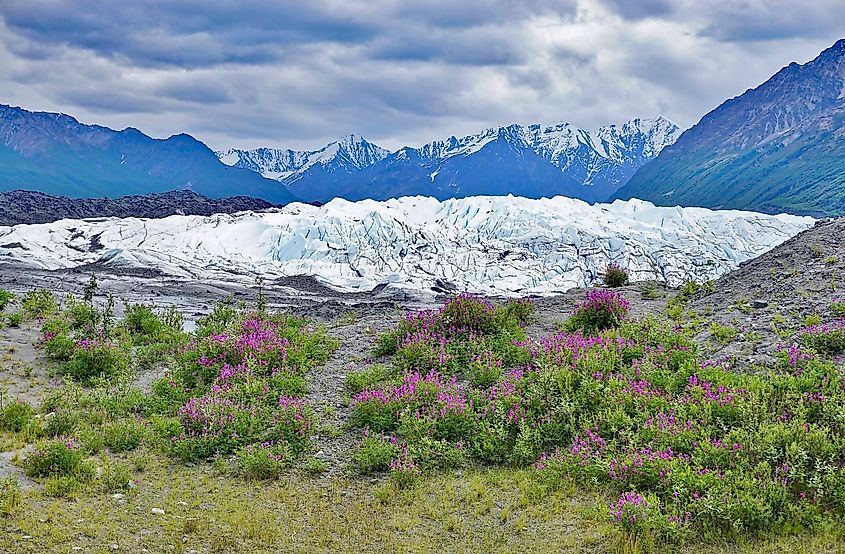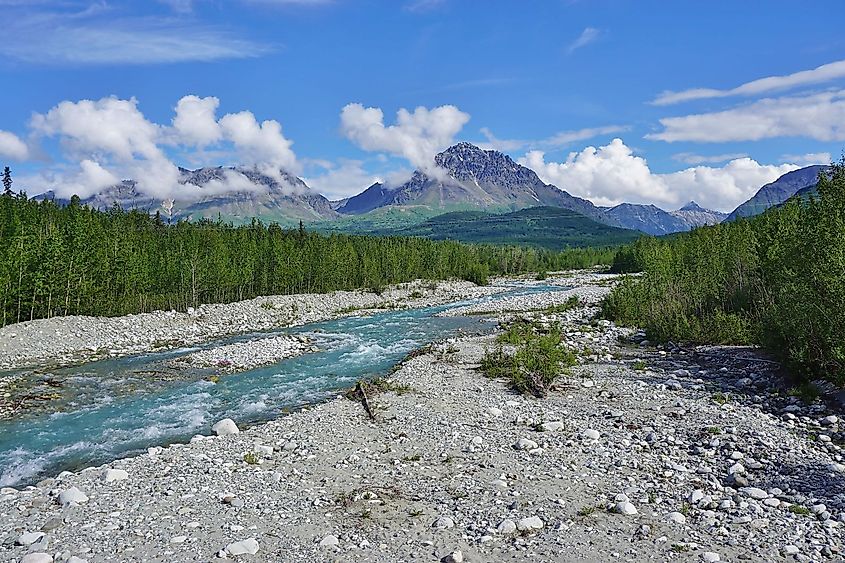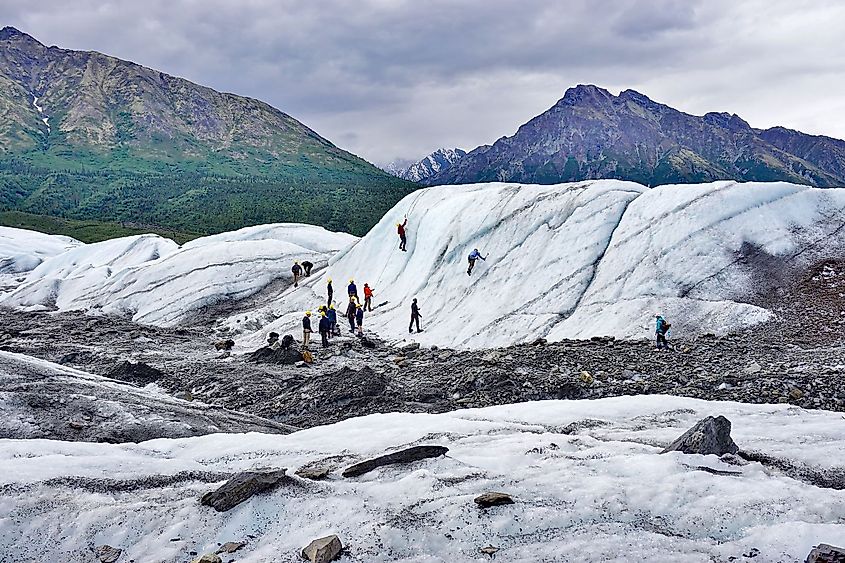
Matanuska-Susitna Valley
Also referred to as The Mat-Su, the Matanuska-Susitna Valley is a large area situated to the south of the Alaska Range in the southcentral part of the US State of Alaska. The valley is located approximately 56km north of the Alaskan city of Anchorage. The Matanuska-Susitna Valley has a lot to offer and much to uncover. It is a stunning area to explore, where one can easily get lost in its beauty. The Mat-Su Valley is full of beautiful things like incredible views, fascinating wildlife, and friendly people who are happy to see visitors worldwide enjoying its natural beauty. And with so much history and prosperous vegetation, it brings together all the fine things this world has to offer.
History Of The Matanuska-Susitna Valley

The geology of the Matanuska-Susitna Valley in Alaska consists of sedimentary and igneous rocks, which tectonic processes have altered. Mat-Su Valley hosts a variety of landforms and rock types, many of which are the result of the glaciers. As the Valley was carved out by glacial meltwater at the end of the last Ice Age, broad swaths of sand, gravel, and silt were brought down from the mountains to fill any low areas, thus forming the basins. The Valley rests on rocks dating back to the dinosaurs' age. You will find prehistoric fossils in various locations, and many visitors go hunting for them. In addition, metamorphic rocks also cover the Valley. They cover a vast region of the basin and are what gives it its jagged and uneven demeanor. Due to their crumbling nature, these rock formations render the area dangerous to travel. The region of Mat-Su got its name from the lakes surrounding the territory. The Native population called one lake "Matanuska," which meant "little lake," and another lake "Susitna," which meant "big water."
Human History Of The Matanuska-Susitna Valley

The Valley comprises four major areas; the Palmer area, the Wasilla area, the Talkeetna area, and the rest is considered to be remote areas. George Palmer founded the Palmer area in the 1880s. It was officially established as a residential area for settlers of the time upon constructing a trading center along the Matanuska River. Before that, the area beside the river was used for thousands of years by Athabascan Indians, who took the route to carry trade goods. During the Great Depression in 1935, President Roosevelt brought 202 families to the area and gave them a plot of land. The Wasilla area was often referred to as "Benteh" by the Dena'ina Indians, which translates to "among the lakes." The area is surrounded by prominent lakes, such as Lake Lucille and Wasilla Lake. Wasilla is the successor of an old small town called Knik, which was pretty populated in 1915 due to nearby goldfields. However, upon the establishment of a city that was much closer to the mines than Knik, all the residents of the area inevitably relocated to Wasilla. Knik soon became a ghosted location, allowing Wasilla to prosper and grow to the town it is today. Inhabited by Dena'ina Indians for centuries, they named the robust area Talkeetna, which means "river of plenty." The local tribes lived off the abundant number of fish in the area for centuries since it was a region in which three significant rivers intersected; the Susitna, the Talkeetna, and Chulitna. Today, Talkeetna attracts over 1,000 mountain climbers yearly since it is the spot from which many start climbing to reach the summit of Mt. McKinley. The rest of the remote areas were inhabited before the European colonization. Indian tribes of the area traveled to these regions to secure food, shelter, and more permanent homes during the winter season.
Plants In The Matanuska-Susitna Valley

The Valley is at the top of the world's most fertile agricultural regions. Its fertile soil and temperate climate make it easy for farmers to grow various crops. The Valley also contains a lush and diverse forest ecosystem. The forest includes spruce, birch, aspen, and larch trees, which lose their needles in the fall and winter. The Valley is mainly known for its prosperous agriculture, and most farms in the area are family-owned. The area has been a farming hub since Europeans settled it in 1902, and today it is home to one of the largest farmer communities in the United States. The area's crops are essential to its economy and account for a significant portion of its revenue. Mat-Su broke world records in growing the world's most oversized vegetables, from 138.25 pounds of green cabbages to 42.75 pounds of beets! Their size is due to the rich soil and the vast sun the crops are exposed to during the growing season. The Valley currently produces many of the state's potatoes and vegetables, oats, greenhouse plants, hay, and sod.
Wildlife In The Matanuska-Susitna Valley
Wildlife in Mut-Su valley is as diverse as the vegetation and farming in the area. You can expect to see moose, bears, and other native animals roaming the region in the Valley.
Moose
These colossal animals are among the most common large mammals found in Alaska, especially in the Mat-Su Valley. They are known for their large antlers and their impressive size. Moose can be found throughout Alaska but are more prevalent in areas with low snowfall and warmer temperatures. Although they are not typically aggressive toward humans, they could injure you if your presence or movement is startled.
Bears
Grizzly and black bears are other familiar sights throughout Alaska's wilderness areas, including the Mat-Su Valley. No matter the type, bears are known to be very protective over their territory and should be avoided if spotted from afar. Black bears tend to avoid humans because they are shy. Grizzly bears, on the other hand, are much more aggressive.
Caribou
These animals are known to be strong mammals since they travel great distances each year. A relative of the reindeer, the caribou, typically travels in herds down the Denali Highway and can be found in the northern and eastern parts of the Valley.
Deer
Deer are another type of animal found in the Mat-Su Valley region. These herbivores feed primarily on grasses but will also eat other plants when necessary. Deer come in many different colors, including browns, grays, and white.
Dall sheep
A common animal throughout the state of Alaska, they are another common sight in the Mat-Su region. Typically, you will spot these animals in the Talkeetna and the Chugach Mountains ranges.
Tourism In The Matanuska-Susitna Valley

One can partake in many activities when visiting the Mat-Su Valley area. With plenty of outdoor activities and breathtaking sights, it is no wonder Mat-Su valley is a hotspot for those seeking relief from deep breaths of fresh air. You can find the ultimate outdoor adventure at Matanuska Glacier. Located in Palmer, Alaska, the Matanuska Glacier is home to some of the best ziplining and hiking trails in the entire state. There is plenty to see within its vicinity. There are so many different options that it can be challenging to know where to start. Here are the five top activities.
Ziplining
Ziplining through a forest of tall pines is an experience unlike any other. You can experience breathtaking views as you fly above treetops and weave through mountain valleys. It is an exhilarating adventure!
All-terrain Vehicle
A little more adventurous thrill than just driving through a forest on a four-wheeler, riding an all-terrain vehicle through snowy peaks and riverside forests can get your heart racing!
Flightseeing
Another famous tourist attraction is the possibility to see the breathtaking view of the Valley from above. Visitors can get a close-up view of the famous mountain peaks when renting a helicopter or a plane.
The other options to consider in the area are hiking tours, snowmobiling, dog sledding, sightseeing, and food tours.